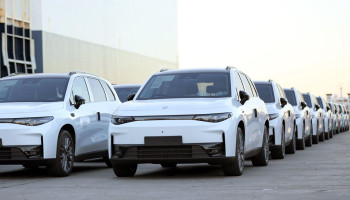Nepal has witnessed its first case of fire on an electric vehicle, recent visuals of an MG ZS EV that caught fire in Kathmandu's Budhanilkantha, have been circulating across the internet. While there were no passengers in the Electric Vehicle (EV) during the incident, the instance triggered a massive outrage on social media, about what caused the fire. We believe that the moment is now opportune to shed some light on this burning matter and tell you about some of the main causes of fires in an EV and how to prevent them.Fires in electric vehicles (EVs) can be caused by various factors, though it's important to note that such incidents are relatively rare compared to traditional internal combustion engine vehicles. Some common causes of fires in electric vehicles include:
- Battery Issues: Lithium-ion batteries, commonly used in electric vehicles, can overheat and catch fire if they are damaged, have manufacturing defects, or experience a thermal runaway. Thermal runaway is a self-reinforcing process where the heat generated by the battery increases the temperature, leading to further heat generation.
- Crash or Impact: High-impact collisions can damage the battery pack or its cooling system, leading to a potential fire hazard. If the battery cells are punctured or compromised in any way, it can result in a thermal runaway and subsequent fire.
- Manufacturing Defects: Defects in the manufacturing process of the electric vehicle or its components, including the battery, can increase the risk of fires. This might include issues with the design, assembly, or quality control of the vehicle.
- Charging Issues: Fires can occur during the charging process if there are faults in the charging infrastructure, such as a malfunctioning charging station or an issue with the charging cable. Overcharging or using incompatible charging equipment can also contribute to battery overheating.
- Electrical System Failures: Malfunctions in the vehicle's electrical system, such as short circuits or electrical component failures, can potentially lead to fires.
- External Factors: Fires can be caused by external factors such as arson, accidents involving other vehicles, or exposure to extreme environmental conditions like extremely high temperatures.
- External short circuit: There could be external short circuits, as the battery pack as a whole is connected through power electronics, the motor, and the other accessories as well. This is a relatively higher voltage battery.
- The charge-discharge cycles: There are certain current thresholds, and those thresholds will differ from different operating temperatures or different battery temperatures. But the charging and the discharging involve taking the current out of the battery or putting the current into the battery. This is also going to generate heat that's going to raise the temperature of the battery cell and, in turn, the battery pack. If it is not managed properly, it can also lead to a thermal runaway.
- Follow Manufacturer Guidelines:
- Adhere to the manufacturer's guidelines and recommendations for charging, maintenance, and operation of the EV. This includes using the specified charging equipment and following the recommended charging procedures.
- Proper Charging Practices:
- Use charging equipment that is compatible with your EV and follows safety standards.
- Avoid using damaged charging cables, and replace them promptly if any signs of wear or damage are observed.
- Do not overload electrical circuits, and use dedicated circuits for EV charging when possible.
- Regular Maintenance:
- Follow the manufacturer's recommended maintenance schedule for the EV, including checking and maintaining the battery system.
- Address any issues promptly and have the vehicle inspected by qualified technicians.
- Avoid Modifications:
- Avoid unauthorized modifications to the electrical system or any other components of the EV. Modifications can compromise the safety features designed by the manufacturer.
- Monitor Battery Health:
- Be aware of any changes in the vehicle's performance, including decreased range, charging issues, or unusual noises. These could be signs of potential battery problems.
- Monitor the battery's state of health using the vehicle's display or monitoring system, if available.
- Safe Parking and Storage:
- Park the EV in a safe location, away from potential hazards such as flammable materials.
- If storing the EV for an extended period, follow manufacturer guidelines for battery storage, including maintaining an appropriate state of charge.
- Emergency Response Preparedness:
- Familiarize yourself with emergency response procedures for EVs. Know the location of emergency shut-off switches, and disconnects, and how to safely exit the vehicle in case of an emergency.
- Stay Informed:
- Stay informed about any recalls or safety updates related to your specific EV model. Register your vehicle with the manufacturer to receive timely notifications.
- Educate Yourself:
- Learn about the specific features of your EV, including its battery management system, thermal management system, and safety features.
- Insurance Coverage:
- Ensure that your insurance coverage includes protection for EV-related incidents. Some insurers offer specific coverage for electric vehicles.
Published Date: Published Date: 2024-01-04 13:55:04
Post Comments
More Local News

Bajaj Introduces Exchange Program throughout Nepal
October 25, 2024

Leapmotor Sends First Shipment of C10 SUVs from China to the Asia Pacific Region, Including Nepal
October 15, 2024












